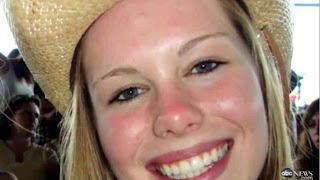If you love the NFL, you've definitely heard the “cha-ching” ringing through cyber space with news of the $765 million settlement between the league and the 4,500 retired players and their families who were suing the league.
These retired players, most suffering from serious neurological conditions, filed the lawsuit claiming – and their physicians agree – that these conditions were a result of repeated head injuries suffered in their playing days. The legal action implied that the NFL had not taken sufficient action to protect the players and even covered up medical data about just how serious the long-term impact of concussions and head injuries could be.
For those of you who love the numbers, here you can see the financial details of the agreement and the way it all breaks out.
Most of the online palaver about the settlement has to do with “Who won? The league, or the players?”
One could definitely say the NFL is the winner. Under the terms of the settlement, it is stated very clearly that the league is not admitting guilt of any wrongdoing around concussions and brain injuries. Expert projections estimated that a trial could result in billions being paid out to players and their families compared to this “measly” $765 million. And a trial would have tied up headlines and caused serious PR problems for the league, likely for years.
According to Christine Brennan, USA Today Sports, “The settlement likely means the NFL won’t have to disclose internal files about what it knew and when it knew it regarding concussion-linked brain problems. That’s too bad because that’s an important piece of sports medicine history.”
On the flip side, is it better to have the matter settled now for the players and their families? “These are the ex-players who have medical bills to pay right now. These are the wives and children who are trying to live with and help a man they barely recognize anymore,” writes Brennan. “This settlement is not nothing to them. It’s something. It’s tangible. And they believe it will help them right away.”
Even the lead plaintiffs’ attorney, Christopher Seeger, had a positive response to the settlement. “This is an extraordinary agreement that will provide immediate care and support to retired players and their families. It will do so faster and at far less cost, both financially and emotionally, than could have ever been accomplished by continuing to litigate.”
The one question I kept asking as a die-hard NFL fan: Why now?
Was it because the players and their loved ones were getting impatient as they watched medical bills piling up and days passing by with no resolution? Were players just weary of the fight and ready to move on? Or, did the NFL push to get this issue resolved before the start of the regular season, to eliminate the possibility of “distractions” during the 2013 season?
As a fan, I am clearly distracted. Instead of breaking down the pre-season performance of rookies and putting together my fantasy league, I am – once again – feeling guilty for loving the game like I do.
The quote that struck me most about this settlement came not from a lawyer, or a player, but from Garrett Webster, the son of former Steelers center, Mike Webster, who died in 2002 from brain disease.
“I hope this settlement is the NFL saying, ‘We’re taking concussions seriously. We’re going to keep working on it.’ The worst-case scenario for me is the NFL saying, ‘We paid you money. Now go away.’ … “It felt like for the longest time we were making stuff up, that we were after money. I would give $200 million for my dad to be back here and be alive. There’s no price on the hell you go through with this.”
Mr. Webster, I hope so, too, and I hope that the research and education fund of $10 million created as part of this settlement, alongside the new rules and protocol instituted by the NFL over the last four years, will protect players from these kinds of tragedies.
But, players will have to be willing to “play along” with this new protocol and look out for their own well-being, as well. That’s something that the NFL can’t control.
In the April 2013 issue of ESPN Magazine, 48 players were surveyed about injuries and concussions. Of the guys polled, 54% say that if they suffer brain damage as a result of playing in the NFL, it’s still worth it.
Then they were asked: If you could win Super Bowl MVP, but it takes 5 years off your life, would that be worth it? Almost half, 48%, respond “yes”. One NFL veteran lineman says, “Hell yeah! And at the rate I’m going, I’m probably going to be in a wheelchair for the last 10 years of my life anyway.”
Images courtesy of ABC News & Toledo Blade
First published via HelloGiggles









